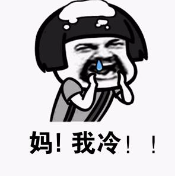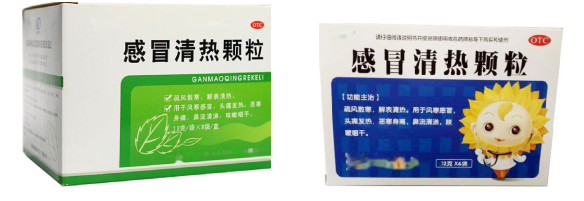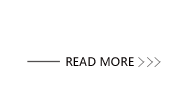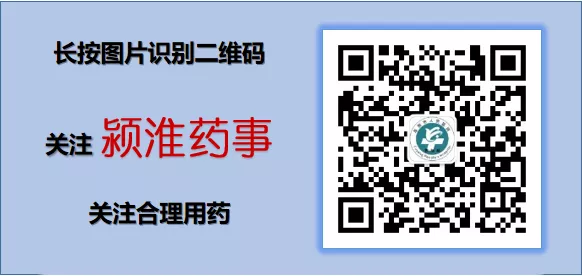
Click the blue text above to follow us

Previously, we learned about the classification of colds in Traditional Chinese Medicine (TCM). Everyone has gained a certain understanding of colds. When we catch a cold due to exposure to cold or other reasons, we can clearly classify the type of cold. Today, let’s learn how to use medicine for different types of colds.

Wind-Cold colds are caused by the invasion of wind-cold evil and the failure of lung qi to disperse. The onset is usually due to fatigue, combined with exposure to wind or cold. Wind-cold colds often occur in cold seasons, such as winter, late autumn, and early spring. However, they can also occur in summer, especially among people who stay in air-conditioned rooms for long periods, leading to symptoms of wind-cold colds.


The characteristics of wind-cold colds are: severe chills, mild fever, headache, significant joint pain, nasal congestion, heavy voice, clear nasal discharge, no thirst, cough with white thin phlegm, throat pain is not obvious, or only a scratchy throat, tongue is not red, and the coating is thin white and moist. Treatment uses the method of warming and dispersing. Common TCM patent medicines include wind-cold cold granules, cold clearing heat granules, Jingfang granules, Shen Su pills, noon tea granules, Zheng Chai Hu drink granules (capsules), cold soft capsules, Chuan Xiong tea adjustment powder, Tong Xuan Li Lung pills, wind-cold cold granules, Jiu Wei Qiang Huo pills, etc.

Next, I will list a few commonly used TCM patent medicines for treating wind-cold colds. When buying medicine at the pharmacy or getting a prescription from a doctor, it is essential to differentiate and treat according to the syndrome.
1. Wind-Cold Cold Granules

Function and Indications Disperse wind and induce sweating, expel wind and scatter cold. Used for wind-cold colds, fever and headache, severe chills, no sweating, cough, nasal congestion, clear nasal discharge. Influenza, acute bronchitis with the above symptoms can also take this medicine.
Precautions Use with caution in patients with hypertension and heart disease.
Contraindications This product contains sucrose, and is contraindicated for patients with diabetes.
Composition Ephedra (Ma Huang), Kudzu root (Ge Gen), Perilla leaf (Zi Su Ye), Siler (Fang Feng), Cinnamon twig (Gui Zhi), Angelica dahurica (Bai Zhi), Dried tangerine peel (Chen Pi), Bitter apricot kernel (Ku Xing Ren), Platycodon root (Jie Geng), Licorice (Gan Cao), Dried ginger (Gan Jiang). Each bag contains 8 grams.
Dosage Take with warm water: 1 bag each time, 3 times a day; children over 7 years take 1/2 of the adult dose, and children aged 3-7 take 1/3 of the adult dose.
During medication, the diet should be light. It is advisable to drink more boiled water, and sweating should not be excessive.

2. Jingfang Granules
Function and Indications Induce sweating and relieve the exterior, disperse wind and eliminate dampness. Used for wind-cold colds, headache and body pain, severe chills without sweating, nasal congestion with clear discharge, cough with white phlegm. In addition to wind-cold colds, this formula can also be used for initial stages of sores, swelling and pain, fever, and chills.
Contraindications This product contains sucrose, and is contraindicated for patients with diabetes.
Composition Schizonepeta (Jing Jie), Siler (Fang Feng), Qiang Huo, Du Huo, Bupleurum (Chai Hu), Radix Peucedani (Qian Hu), Chuan Xiong (Chuan Xiong), Bitter orange (Zhi Ke), Poria (Fu Ling), Platycodon root (Jie Geng), Licorice (Gan Cao). Each bag contains 15 grams.
Dosage Take with boiling water. Each time 1 bag, 3 times a day. Other forms: Jingfang mixture, each bottle 100 milliliters. Oral, 10-20 milliliters each time, 3 times a day.
Avoid raw and cold foods.
3. Cold Clearing Heat Granules

Function and Indications Disperse wind and scatter cold, relieve the exterior and clear heat. Used for wind-cold colds, headache and fever, severe chills and body pain, clear nasal discharge, cough with dry throat.
Precautions Not suitable for those with physical weakness and frequent spontaneous sweating.
Composition Schizonepeta (Jing Jie), Peppermint (Bo He), Siler (Fang Feng), Bupleurum (Chai Hu), Perilla leaf (Zi Su Ye), Kudzu root (Ge Gen), Platycodon root (Jie Geng), Bitter apricot kernel (Ku Xing Ren), Angelica dahurica (Bai Zhi), Bitter ground ivy (Ku Di Ding), Reed root (Lu Gen). Each bag contains 12 grams, 6 grams (sugar-free type).
Dosage Take with boiling water: 1 bag each time, 2 times a day. This product contains sucrose; diabetic patients can take the sugar-free granules (powder). Other forms: Cold clearing oral liquid, each bottle 10 milliliters. Oral, 10 milliliters each time, 2 times a day. Cold clearing capsules, take as directed.
4. Shen Su Tablets
Function and Indications Disperse wind and scatter cold, eliminate phlegm and stop cough. Used for wind-cold colds, weak colds, shortness of breath and fatigue, chills and fever, headache and nasal congestion, cough with much phlegm, chest tightness and nausea. Upper respiratory infections, acute bronchitis, etc., with the above symptoms can also be selected.
Contraindications Patients with wind-heat colds should avoid taking this.
Composition Codonopsis (Dang Shen), Perilla leaf (Zi Su Ye), Kudzu root (Ge Gen), Radix Peucedani (Qian Hu), Poria (Fu Ling), Pinellia (Ban Xia) (processed), Dried tangerine peel (Chen Pi), Bitter orange (Zhi Ke) (fried), Platycodon root (Jie Geng), Licorice (Gan Cao), Costus root (Mu Xiang).
Dosage Oral. Each time 3-5 tablets, 2-3 times a day. Other forms: Shen Su pills (water pills) oral: each time 1 bag (9 grams), 2-3 times a day; Shen Su capsules oral: 4 capsules each time, 2 times a day; Shen Su granules (powder) each bag 20 grams. Take with boiling water: 20 grams each time, 2 times a day. Or follow doctor’s advice.
Avoid raw, cold, and greasy foods.
5. Noon Tea Granules

Function and Indications Relieve the exterior and harmonize the stomach. Used for wind-cold colds, experiencing wind-cold, severe chills and fever, with food accumulation, or accompanied by vomiting and diarrhea. Gastrointestinal colds, acute gastroenteritis, gastrointestinal dysfunction, indigestion, allergic enteritis, etc., with the above symptoms can also be selected.
Contraindications Not suitable for those without food accumulation or those with wind-heat colds. This product contains sucrose; diabetic patients can choose the sugar-free type.
Composition Atractylodes (Cang Zhu), Bupleurum (Chai Hu), Qiang Huo, Siler (Fang Feng), Angelica dahurica (Bai Zhi), Chuan Xiong (Chuan Xiong), Patchouli (Guang Huo Xiang), Radix Peucedani (Qian Hu), Forsythia (Lian Qiao), Dried tangerine peel (Chen Pi), Hawthorn (Shan Zha), Bitter orange (Zhi Shi), Malt (Mai Ya) (fried), Licorice (Gan Cao), Platycodon root (Jie Geng), Fried Magnolia bark (Hou Po), Black tea. Each bag contains 6 grams.
Dosage Take with boiling water. Each time 1 bag, 1-2 times a day. Other forms: Noon tea (tea bags) each time 1 bag, 1-2 times a day.
When choosing TCM patent medicines for treatment, it is best to follow the doctor’s advice. Do not randomly use some TCM patent medicines for treatment, as some medicines are for treating wind-heat colds, and using them for wind-cold colds will really worsen the condition.
According to the instructions on the medicine, generally, after a few days of treatment, the patient’s condition can improve. After taking the medicine, you can drink some hot porridge or soup, and sweat slightly to help the medicinal effect disperse wind-cold. Avoid eating spicy foods during the medication period, and keep the meals light. Eating more vegetables and fruits will also be beneficial for recovery, such as carrots, cabbage, spinach, and rapeseed, as well as apples, pears, oranges, and watermelons.

Through the above introduction, I hope that patients can accurately understand the medications and use them under the guidance of a doctor. Ensure your health, and I hope you can gain some help from this. Wishing you good health and a speedy recovery.


End
Image source: InternetEdited by: Liu Ying Zhao Linlin Li XiayanProofread by: Wu DongChief Editor: Wang Xiaojun Historical messages on clearing heat and detoxifying, how much do you know about “Three Huang” insulin, dietary taboos when taking Chinese medicine Fuyang People’s Hospital Pharmacy Department official public account—Thank you for your attention
Fuyang People’s Hospital Pharmacy Department official public account—Thank you for your attention


